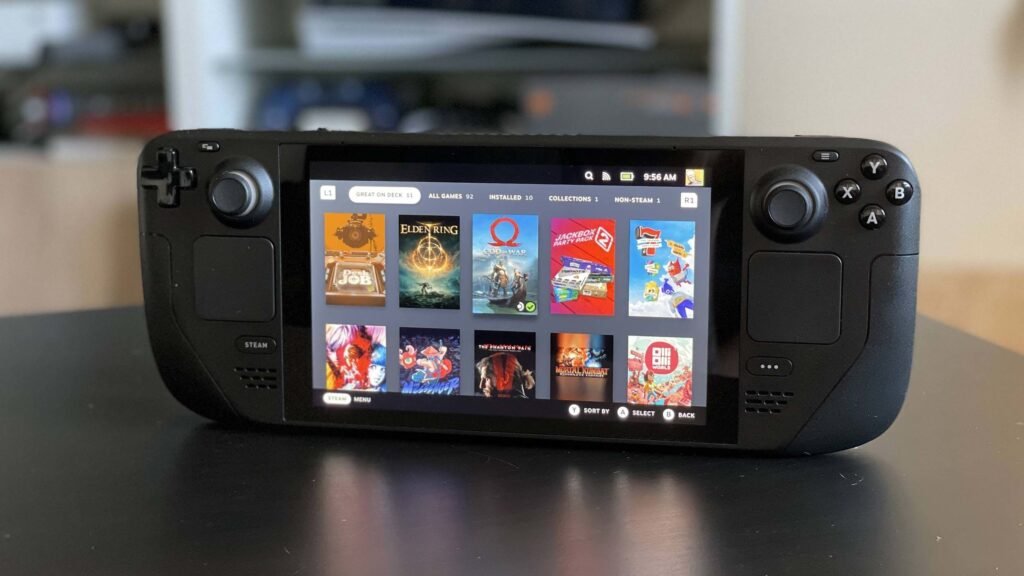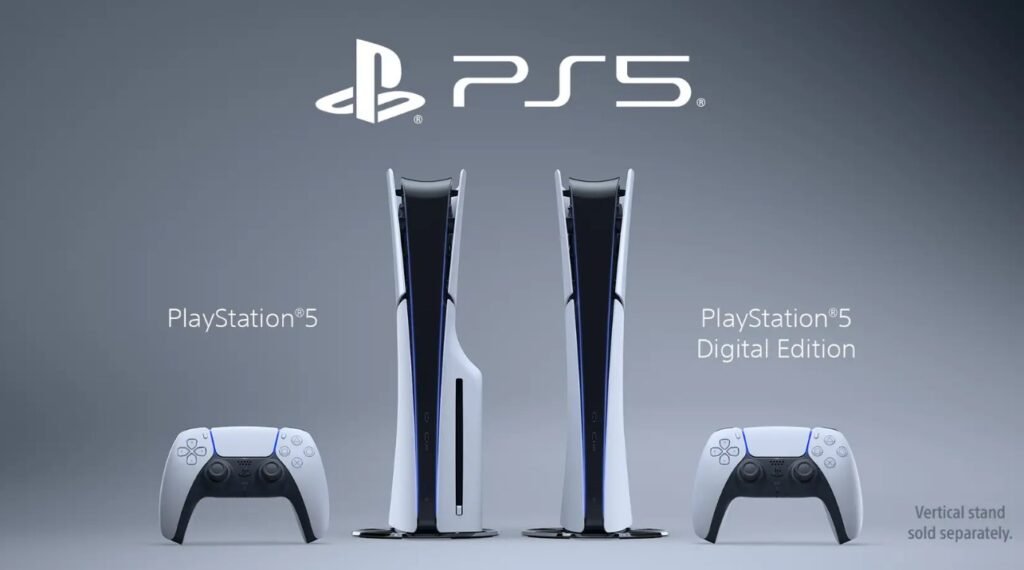Steam Deck: Redefining Handheld Gaming
In the ever-evolving landscape of gaming technology, Valve Corporation has once again seized the spotlight with the introduction of the Steam Deck. This ambitious handheld gaming device represents a paradigm shift in the way we experience our favorite titles, promising to merge the portability of handheld consoles with the power and versatility of a gaming PC. At its core, the Steam Deck is the culmination of years of innovation and expertise from one of the most influential players in the gaming industry. Building upon the success of Valve’s digital distribution platform, Steam, the Steam Deck seeks to bridge the gap between traditional PC gaming and handheld consoles, offering a compelling alternative for gamers on the go.

Design and Form Factor
One of the most striking aspects of the Steam Deck is its sleek and ergonomic design. Crafted with the needs of gamers in mind, the device features a 7-inch touchscreen display surrounded by an array of familiar gaming controls, including thumbsticks, buttons, and triggers. This layout not only ensures a comfortable and intuitive gaming experience but also allows users to seamlessly transition from traditional gaming setups to the handheld form factor of the Steam Deck.
What truly sets the Steam Deck apart is the impressive hardware packed under its hood. Powered by a custom AMD APU featuring a quad-core Zen 2 CPU and RDNA 2 GPU architecture, the device delivers a level of performance previously unseen in handheld gaming devices. This formidable hardware, combined with various storage options ranging from 64GB eMMC to 512GB NVMe SSD, ensures that gamers can enjoy their favorite titles with smooth frame rates and quick load times, all without compromising on storage space.
The Birth of Steam Deck
The genesis of the Steam Deck can be traced back to Valve Corporation’s longstanding commitment to innovation and pushing the boundaries of gaming technology. While the concept of a handheld gaming device capable of running PC games had been explored by various companies in the past, Valve saw an opportunity to leverage its expertise in software development, digital distribution, and hardware design to create something truly groundbreaking.
The seeds of the Steam Deck were planted years before its official announcement, as Valve observed the shifting landscape of gaming preferences and behaviors. The rise of mobile gaming and the success of handheld consoles like the Nintendo Switch demonstrated a growing demand for gaming experiences that prioritize portability without sacrificing performance or versatility. Valve recognized this trend and set out to create a device that could cater to the needs of both casual and hardcore gamers alike.
The development process behind the Steam Deck was characterized by meticulous attention to detail and a commitment to delivering a product that met Valve’s exacting standards. Teams of engineers, designers, and software developers worked tirelessly to overcome technical challenges and refine the device’s hardware and software components. Key considerations during the development phase included the design of the device’s form factor, the selection of components to ensure optimal performance, and the creation of a user interface that would provide a seamless gaming experience. Valve also focused on addressing potential obstacles such as heat management, battery life, and compatibility with a wide range of PC games.
Throughout the development process, Valve remained dedicated to its vision of creating a device that would offer gamers the freedom to play their favorite titles wherever they go. This meant striking a delicate balance between power and portability, ensuring that the Steam Deck could deliver a level of performance comparable to a gaming PC while remaining lightweight and compact enough to be easily carried and used on the move. The unveiling of the Steam Deck in July 2021 marked the culmination of years of research, development, and collaboration. The announcement generated widespread excitement and anticipation within the gaming community, with many eager to get their hands on Valve’s latest creation.
Design and Build
One of the first things that catch the eye about the Steam Deck is its sleek and ergonomic design. The device features a 7-inch touchscreen display flanked by thumbsticks, buttons, and triggers, providing a familiar gaming experience for PC gamers. The layout resembles a traditional gaming controller, ensuring comfortable gameplay sessions even during extended periods.
Under the hood, the Steam Deck boasts impressive hardware specifications. Powered by a custom AMD APU featuring a quad-core Zen 2 CPU and RDNA 2 GPU architecture, it delivers smooth performance and stunning visuals. Additionally, the device comes with various storage options, including 64GB eMMC, 256GB NVMe SSD, and 512GB NVMe SSD, catering to different storage needs.
Operating System and Software
At the heart of the Steam Deck lies Valve’s custom-built SteamOS, based on Linux. Designed to offer a seamless gaming experience, SteamOS provides access to the entire Steam library, allowing users to play their favorite games on the go. Furthermore, the Steam Deck supports other PC platforms like Windows, giving users the flexibility to install additional software and customize their gaming experience.
Performance and Gameplay
The true test of any gaming device lies in its performance, and the Steam Deck doesn’t disappoint. Thanks to its powerful hardware, the device can handle a wide range of games, from indie titles to AAA blockbusters. Whether you’re exploring vast open worlds or engaging in fast-paced multiplayer battles, the Steam Deck delivers smooth and responsive gameplay, rivaling that of traditional gaming PCs.
The device’s versatility extends beyond gaming, allowing users to stream media, browse the web, and even connect external peripherals like keyboards and mice. With its built-in gyro sensors, the Steam Deck also supports motion controls, adding another layer of immersion to gaming experiences.

